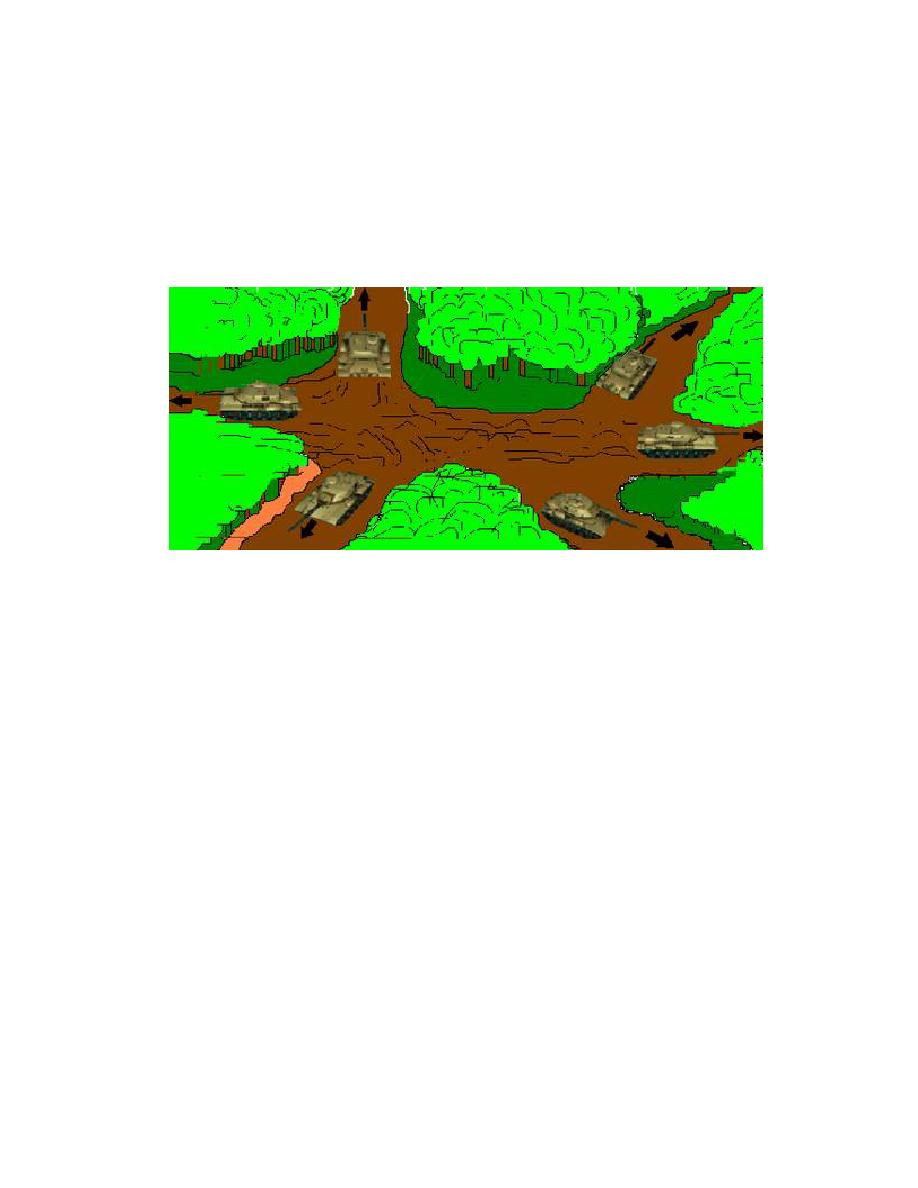
(3) Do not park vehicles in a straight line; instead, stagger the vehicles to present a
poor target. Park the vehicles under cover if available. Make arrangements with the drivers so
that if an attack occurs, they can (disperse) drive the vehicles to the opposite sides of the road to
seek cover; for example the lead vehicle (odd numbered) is driven to the left, the second vehicle
driver (even numbered) pulls off to the right, and so on (Figure 22).
Figure 22. Vehicle Dispersion
c. Post Air Guards. Air guards will be posted throughout the column, constantly watching
the skies in their assigned areas, ready to give early warning of a detected hostile aircraft. The
sooner a threat aircraft is detected, the more time you will have to react. Air guards will search
and scan for approaching aircraft, observing their assigned sectors. Alert the vehicle commander
after sighting an aircraft by calling out, "plane," and pointing to the aircraft.
d. React to Overflights. If a hostile aircraft or a flight of hostile aircraft passes over your
convoy and does not attack the convoy, you will still disperse the vehicles to the sides of the road.
Stagger the convoy and prepare to return fire in case the aircraft returns. If the aircraft attacks,
everyone will choose the correct aiming point and fire upon command until the aircraft is hit or
flies out of effective range. Small arms alone can give coverage figure 23.
30



 Previous Page
Previous Page
